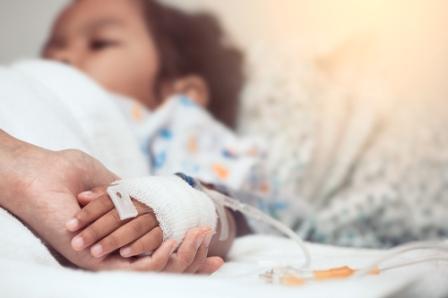
Children from racial and ethnic minority groups are less likely to survive childhood cancer than their white counterparts, and a new U.S. study suggests the survival gap is widest for tumors that are easier to treat.
Compared to white children with cancers that should be responsive to treatment, Hispanic kids with the same tumor types were 63% more likely to die, and black children were 59% more likely to die, the study team reports in JAMA Pediatrics.
Survival odds were also greater for white children with the most difficult-to-treat tumors, but these differences weren’t as pronounced, they found.
“These disparities are thought to be related to differences in socioeconomic status and access to resources between different racial/ethnic groups,” said study coauthor Kimberly Johnson of Washington University in St. Louis, Missouri.
“Our study suggests that these disparities vary depending on the treatability of the cancer,” Johnson said by email. “Specifically, we found that children diagnosed with more-treatable cancers had greater disparities in survival than those diagnosed with less-treatable cancers.”
For the study, researchers examined data on 67,061 kids diagnosed with cancer at age 10, on average. Most often, these children had leukemia, brain tumors or an immune system cancer known as non-Hodgkin lymphoma.
Researchers sorted kids into three groups based on the five-year survival rates for the type of tumor they had. Children with the easiest-to-treat cancers had five-year survival rates of more than 85%, while kids with the hardest tumors to treat had five-year survival rates of less than 70%.
With the easiest-to-treat tumors, American Indian or Alaskan Native patients were also 60% more likely to die than non-Hispanic white kids, and Asian and Pacific Islander kids were 46% more likely to die, though the samples were too small to rule out those results being due to chance.
One limitation of the study is that researchers lacked data on how advanced tumors were at the time of diagnosis. They also lacked data on income and education levels for patients’ families, and it’s possible that this, like tumor staging, could impact survival odds, the authors note.
“Non-biological factors - such as socioeconomic status - are almost certainly contributing to these disparities,” said Dr. Kira Bona of the Dana-Farber/Boston Children’s Cancer and Blood Disorders Center.
Families struggling to pay for chemotherapy or other prescriptions might skip doses, hurting kids’ survival odds, Bona, who wasn’t involved in the study, said by email. Low-income families might also struggle to access new drugs available through clinical trials because they can’t afford to travel or miss work.
Treatment delays due to costs or travel might also disproportionately impact nonwhite children, said Dr. Adam Green, a pediatric oncologist at Children’s Hospital Colorado, in Aurora.
“Even for more curable childhood cancers, the treatment is still complex, usually involving multiple medicines given over a long period of time or multiple treatment types like chemotherapy, radiation, and surgery,” Green, who wasn’t involved in the study, said by email.
“In these more curable cancers, this is where the issues that we believe cause disparities based on race and ethnicity, including barriers to care and timely diagnosis, quality of care, and economic factors affecting ability to follow treatment regimens, really come into play.”
Source: Reuters
 FR
FR EN
EN AR
AR








